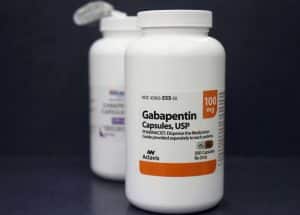Is Gabapentin Addictive?
Gabapentin, a medication primarily utilized to treat seizures and neuropathic pain, has garnered attention regarding its potential for addiction. Originally approved by the U.S. Food and Drug Administration (FDA) in 1993, Gabapentin works by modulating neurotransmission in the brain, particularly affecting the GABA (gamma-aminobutyric acid) system. While it is not classified as a controlled substance in the United States, the discussions surrounding its Gabapentin abuse have intensified in recent years.
To ascertain whether Gabapentin is addictive, it is imperative to consider the nature of addiction itself. Addiction is characterized by compulsive drug seeking, continued use despite harmful consequences, and the development of tolerance and withdrawal symptoms. Research indicates that Gabapentin does not produce the euphoric “high” associated with many addictive substances, such as opioids or stimulants. Consequently, the potential for physical dependence is deemed lower. However, this conclusion does not preclude the notion of misuse or abuse.
Reports of Gabapentin misuse have surfaced, particularly among individuals with a history of substance abuse disorders. In some instances, patients have combined Gabapentin with other central nervous system depressants, such as opioids or alcohol, to enhance the sedative effects. Such practices can result in dangerous side effects and elevate the risk of respiratory depression, overdose, or other serious complications. Furthermore, individuals who misuse Gabapentin may experience withdrawal symptoms, which can manifest as anxiety, insomnia, or increased pain, leading to a cycle of dependence.
The perplexing nature of Gabapentin’s addictive potential lies in its pharmacological profile and the context in which it is prescribed. While many patients use it as directed and experience significant therapeutic benefits without developing addiction, others may find themselves misusing the drug. Consequently, healthcare providers must exercise caution when prescribing Gabapentin, particularly in patients with a prior history of substance abuse.
What is Gabapentin and Where Did it Come From?
Gabapentin, a medication primarily used to manage neuropathic pain and seizures, has garnered significant attention in both clinical and pharmaceutical contexts since its introduction in the late 1990s. It is classified as an anticonvulsant and is often prescribed for conditions such as postherpetic neuralgia, fibromyalgia, and restless leg syndrome. Its mode of action involves inhibiting certain neurotransmitters in the brain, thereby stabilizing neuronal excitability.
The origins of Gabapentin date back to the 1970s, when it was developed by the pharmaceutical company Parke-Davis, which is now a subsidiary of Pfizer. Researchers sought to create a new class of drugs that could effectively address seizure disorders while minimizing side effects commonly associated with existing therapies. Through rigorous scientific exploration, Gabapentin was synthesized as an analog of gamma-aminobutyric acid (GABA), a neurotransmitter that plays a crucial role in reducing neuronal excitability.
The drug’s approval by the U.S. Food and Drug Administration (FDA) in 1993 marked a significant milestone in its clinical journey. Gabapentin was initially indicated for the treatment of epilepsy, particularly in patients who did not achieve adequate control over their symptoms with standard therapy. However, its efficacy extended beyond seizure control; clinicians soon observed its potential in alleviating neuropathic pain associated with various medical conditions, leading to an expanded off-label use.
One notable aspect of Gabapentin is its relatively favorable side effect profile compared to other anticonvulsants. Commonly reported side effects include dizziness, fatigue, and mild sedation; however, it is generally considered tolerable for most patients. The drug’s popularity surged in the 2000s, as healthcare professionals increasingly recognized its benefit for patients suffering from chronic pain.
Despite its therapeutic advantages, Gabapentin’s rise in usage has not been without controversy. Concerns regarding over-prescription, especially for conditions beyond its FDA-approved indications, have sparked debates in the medical community and regulatory circles. Additionally, there is ongoing research into the drug’s long-term effects, efficacy, and potential for misuse.
The Rise of Gabapentin Abuse and Addiction
Gabapentin has gained notoriety in recent years for its increasing misuse and associated addiction potential. This unforeseen trajectory can be attributed to various factors, including its off-label prescribed uses, societal perceptions of safety, and its pharmacological effects, which may contribute to abuse.
In the medical community, gabapentin has been recognized for its efficacy in treating chronic pain and managing anxiety disorders, among other conditions. However, its widespread off-label prescribing has led to an escalation in its availability and misuse. Patients seeking relief from anxiety, insomnia, or other distressing conditions have turned to gabapentin, sometimes without a proper assessment of its risks, thereby blurring the lines between appropriate medical use and potential for abuse. Moreover, physicians, often unaware of the drug’s abuse potential, continue to prescribe it liberally, facilitating its over-prescription.
The perception of gabapentin as a relatively “safe” medication, particularly in comparison to opioids, also contributes to its abuse. While gabapentin is not classified as a controlled substance in many jurisdictions, this lack of regulatory oversight creates an environment where misuse can flourish. Users have reported that gabapentin can induce feelings of euphoria, amplify mood, or provide sedation, effects that may lead some individuals to misuse the drug for recreational purposes. This ease of access, combined with the misconception of safety, has fostered a climate ripe for addiction.
The significance of gabapentin abuse extends beyond individual cases; it highlights broader public health concerns. Rising instances of gabapentin addiction have been documented alongside alarming trends in opioid misuse, revealing a complicated relationship between these substances. Users seeking to enhance the effects of opioids have increasingly combined them with gabapentin, resulting in dangerous interactions and heightened risks of overdose. Consequently, healthcare providers are faced with the dual challenge of managing legitimate medical needs while combating the potential for dependence and addiction.
The rise of gabapentin abuse is a multifaceted issue driven by its widespread off-label use, societal misconceptions regarding safety, and its euphoric potential. As the landscape of drug misuse continues to evolve, it is imperative for both medical professionals and patients to approach gabapentin with caution, fostering awareness of its risks while ensuring that those with legitimate medical needs receive appropriate care. Comprehensive education and stricter prescribing practices may mitigate the potential for addiction, safeguarding public health in an increasingly complex pharmaceutical environment.
Withdrawal From Gabapentin and Other Impacts to Physical Health from Gabapentin Abuse
As Gabapentin prescription has increased, so too have instances of misuse and subsequent withdrawal, raising concerns regarding its impact on physical health. Understanding the withdrawal process and the broader health implications associated with gabapentin abuse is essential for healthcare providers and patients alike.
Withdrawal from gabapentin can manifest with a variety of physical and psychological symptoms. Unlike substances with more pronounced dependency profiles, gabapentin does not typically produce severe withdrawal symptoms akin to opioids or benzodiazepines. Nonetheless, individuals who have used gabapentin in higher than prescribed dosages or for extended periods may experience a withdrawal syndrome characterized by anxiety, insomnia, nausea, and increased pain levels. These symptoms, while not life-threatening, can be debilitating and lead to a cycle of misuse as individuals seek relief from the discomfort of withdrawal.
Gabapentin abuse has also been linked to various adverse impacts on physical health. The misuse of gabapentin may lead to persistent cognitive impairments, particularly in areas such as memory and attention, as high doses can interfere with the brain’s neurotransmitter activities. The drug’s sedative properties may increase the risk of falls and fractures, particularly in older populations using it for pain relief. Furthermore, the potential for increased tolerance may compel users to escalate dosages, heightening the risk of side effects such as dizziness, fatigue, and visual disturbances.
Beyond the immediate physical risks, long-term gabapentin abuse poses broader health concerns. Chronic misuse can alter pain perception, potentially leading to hyperalgesia, a condition where individuals become more sensitive to pain, perpetuating a cycle of dependence on the drug. Additionally, misuse can lead to significant disruptions in daily life, adversely affecting personal relationships, employment, and overall quality of life.
While gabapentin can provide significant benefits for those with specific medical conditions, its abuse and subsequent withdrawal have notable repercussions on physical health. The withdrawal process, although typically less severe than other substances, can lead to considerable discomfort and the potential for further misuse. Furthermore, the physical health impacts of gabapentin abuse underscore the importance of responsible prescribing practices and patient education regarding the risks associated with misuse. Clinicians must remain vigilant in monitoring patients for signs of dependency and withdrawal, fostering an environment where the true benefits of gabapentin can be harnessed without the shadow of abuse.
Ambrosia Behavioral Health’s Approach to Treating Gabapentin Addiction in its Florida Drug Rehab
Gabapentin, initially developed to manage epilepsy and neuropathic pain, has increasingly garnered attention for its potential for misuse and addiction. As prescriptions for this medication rise, so too does the incidence of gabapentin addiction, prompting specialized treatment approaches. Ambrosia Behavioral Health, a notable name in Florida’s drug rehabilitation landscape, has crafted an evidence-based paradigm for addressing gabapentin dependency through comprehensive and individualized care strategies.
At the core of Ambrosia’s treatment model lies a dual focus on medical management and psychological support. Recognizing that addiction impacts both the physical and emotional aspects of an individual, the facility harnesses a multidisciplinary approach, integrating healthcare professionals, therapists, and addiction specialists. Initially, clients undergo a thorough assessment that evaluates their medical history, substance use patterns and underlying psychological issues. This comprehensive evaluation informs the creation of a tailored treatment plan aimed at addressing the unique needs of each individual, ensuring that therapy is both relevant and effective.
A crucial aspect of Ambrosia’s methodology is medical detoxification, which is carefully monitored by qualified professionals. Such supervision is essential for minimizing withdrawal symptoms and ensuring safety during the initial stages of recovery. Common symptoms of gabapentin withdrawal may include anxiety, insomnia, and irritability, making a structured detox imperative. During this phase, medication-assisted treatment (MAT) may also be considered, utilizing alternative medications to alleviate withdrawal discomfort and support the patient’s transition to recovery.
Alongside medical intervention, Ambrosia emphasizes the importance of psychological counseling and support groups. Cognitive Behavioral Therapy (CBT) is often employed to help clients uncover the underlying triggers of their addiction and develop healthier coping mechanisms. Group therapy sessions foster a sense of community and accountability among peers who share similar struggles, which can be instrumental in the recovery journey.
Furthermore, Ambrosia Behavioral Health advocates for aftercare planning, recognizing that the road to recovery extends beyond treatment. Customized aftercare programs, including ongoing therapy, support groups, and a holistic emphasis on lifestyle changes, help to fortify the foundation of recovery, minimize the risk of relapse, and promote sustained sobriety.
Ambrosia Behavioral Health’s approach to treating gabapentin addiction in their Florida drug rehab epitomizes a holistic and individualized treatment paradigm. By integrating medical interventions with psychological support and proactive aftercare planning, Ambrosia not only addresses the immediate challenges of addiction but also empowers individuals to reclaim their lives and foster long-term recovery.
In Conclusion
In summary, while Gabapentin is not generally regarded as addictive in the traditional sense, its potential for misuse and the development of dependence should not be overlooked. Responsible prescribing practices, careful monitoring, and patient education are essential in mitigating the risks associated with this medication. Further research is warranted to explore the nuances of Gabapentin’s effects, its interaction with other substances, and its long-term impact on those who use it. In light of these considerations, it is prudent to approach Gabapentin with the same scrutiny applied to all medications, particularly in vulnerable populations.
Ambrosia is the Leading Florida Drug Rehab
Are you ready to get started on the path to recovery from addiction? Ambrosia is here to guide you on the path to a healthier mind and body. At Ambrosia Treatment Center, we offer a comprehensive approach to addiction treatment, using modern methods backed by neuroscience, holistic therapies, and compassionate care to help you if you are struggling with Gabapentin abuse or Gabapentin addiction. Whether you’re struggling with alcoholism or drug addiction Ambrosia provides the support you need.
Take the first step towards a balanced and fulfilling life with Ambrosia. Your recovery is our priority—reach out today and begin your journey toward a brighter, happier future!






